This month I continue the series on pruning with a look at pruning established landscape trees. These are trees in the prime of life, growing well, starting to shade the garden beneath them and expanding their canopies. Various reasons can prompt the call for tree care professionals.
What reasons would we have to prune a healthy vigorous mid-aged tree? For those we have to examine what may have happened in the past. The fact that a tree is growing well does not always mean it was “selected” well. After a few years time, that cute little nursery tree is flexing its branches and spreading out and, more worryingly, upward. One of the prime reasons for pruning is to reduce the size or expansion of a tree canopy. There may be impending interference with power transmission or other utility lines. The tree may be blocking a view, it may just be frightening in its shear mass or size and pose a psychological threat to its owner. Size reduction is a frequent object of tree pruning operations.
The tree is too large for my comfort
If you find that you want to reduce size of a tree you should ask yourself is it possible and is it sustainable? Ultimately, do I have the right tree for this spot?
Size reduction pruning is a battle with tree genetics. The tree wants to achieve a designated height and the tree owner wants to limit that height. Terminal or leaders can be pruned back to a lateral branch to reduce the length of stems and branches. This kind of “thinning” is effective as long as the branch that a leader is trimmed to is large enough to resume the hormonal role for that portion of the tree. Arborists have a 1/3 rule that suggests the branch you trim back to should be at least 1/3 the diameter of the stem it is attached to. That is, you don’t trim back to a twig otherwise it is a heading cut and re-sprouting will be abundant and require more pruning. The problem with the 1/3 rule is that trees don’t respond consistently to pruning on this basis. Some will re-sprout at the cut, others will not. In any event if you embark on size reduction pruning you will likely be maintaining that strategy over the life of the tree and this may not be sustainable. Removal and replanting with a smaller tree species that can be cultivated with little or no pruning would be a more sustainable approach.
Deadwood, I see Deadwood

Deadwood is not the end of a tree or necessarily a reason to call the tree trimmer. Deadwood can serve as habitat for cavity nesting birds and is an important part of tree ecology. But dead branches that hang down and have broken from the canopy pose hazards and should be carefully removed. A dead leader can be pruned back and retained especially if woodpeckers have excavated nests that other cavity nesting birds, such as owls, will subsequently use. Of course if the deadwood is part of the active pathology of an ongoing tree disease, its removal may be warranted to prevent disease progress. This diagnosis would involve consultation with your state extension specialist or agent and or qualified arborist with training in tree diseases.
I have a tree with uncorrected branch faults
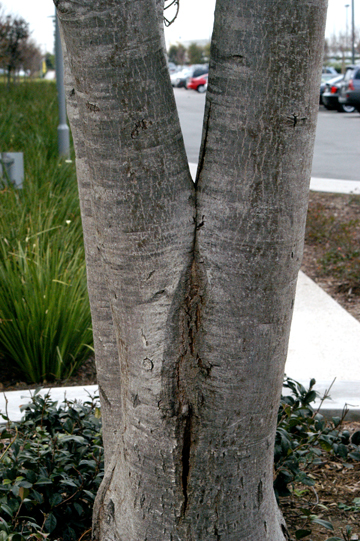
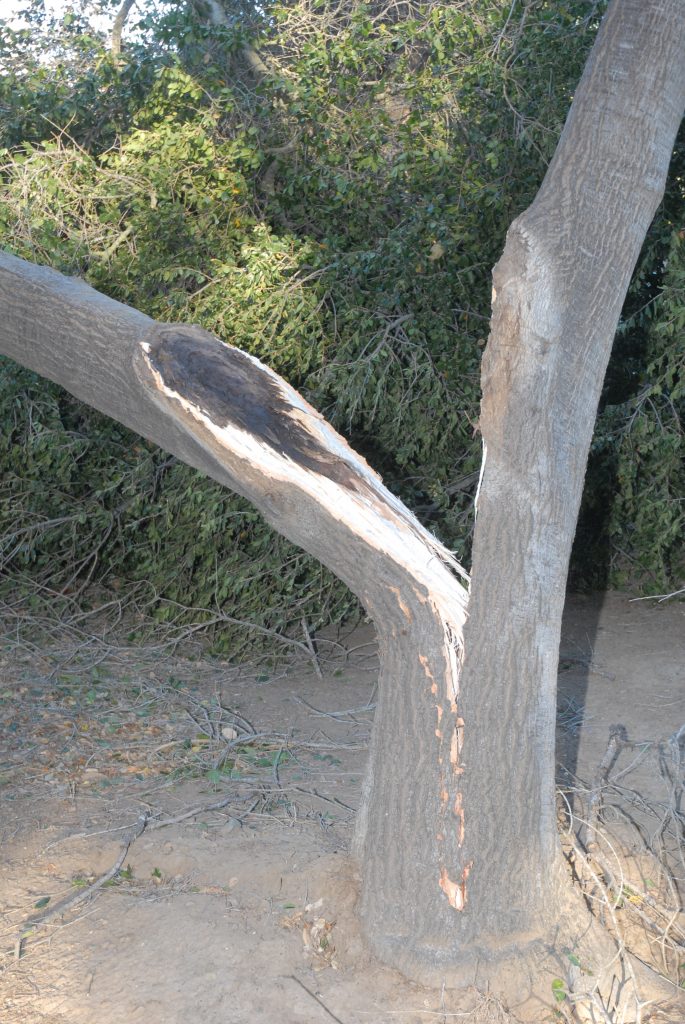
Perhaps after careful study you realize your tree has co-dominant stems or too many branches coming from one place on the main stem. Both are important branch faults that precede branch failures. Co-dominant stems look like a “slingshot for giants”, two big stems both the same size. Often they are accompanied by included bark that separates the stems. The problem is often that when the stems are large, pruning one will leave a big wound that can let in decay and decrease the life of the tree. If a codominant is 6 inches or larger, it may be best to not remove it. Or remove the entire tree thus fixing the issue. If you want to keep the tree you should choose one stem to thin and prune rather aggressively (not topped) and leave the other stem unpruned. Over time the thinned out stem will grow slower and the unpruned one faster and the codominance will decline. This strategy will require year over year pruning to achieve your goal of shifting the codominants.
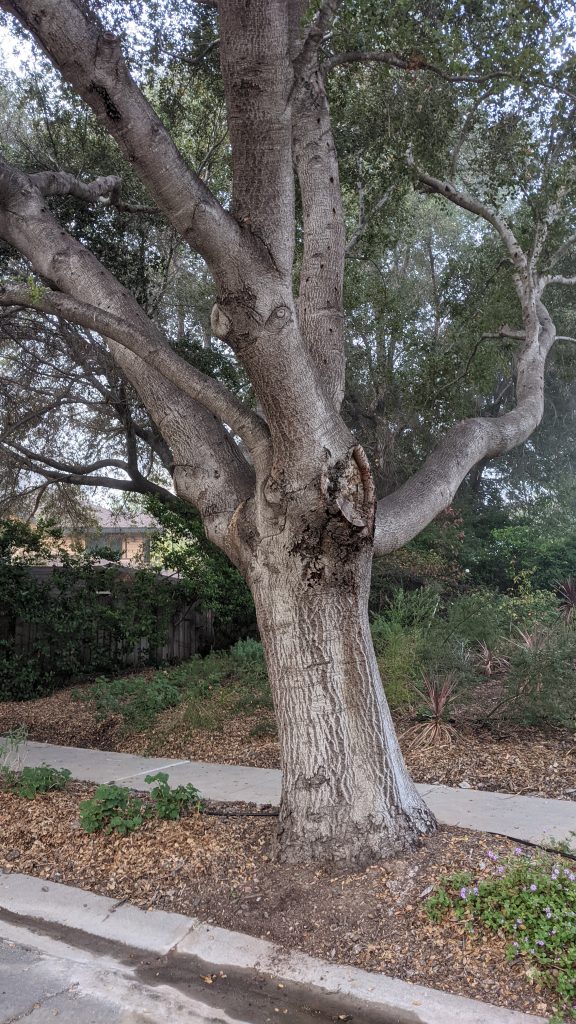
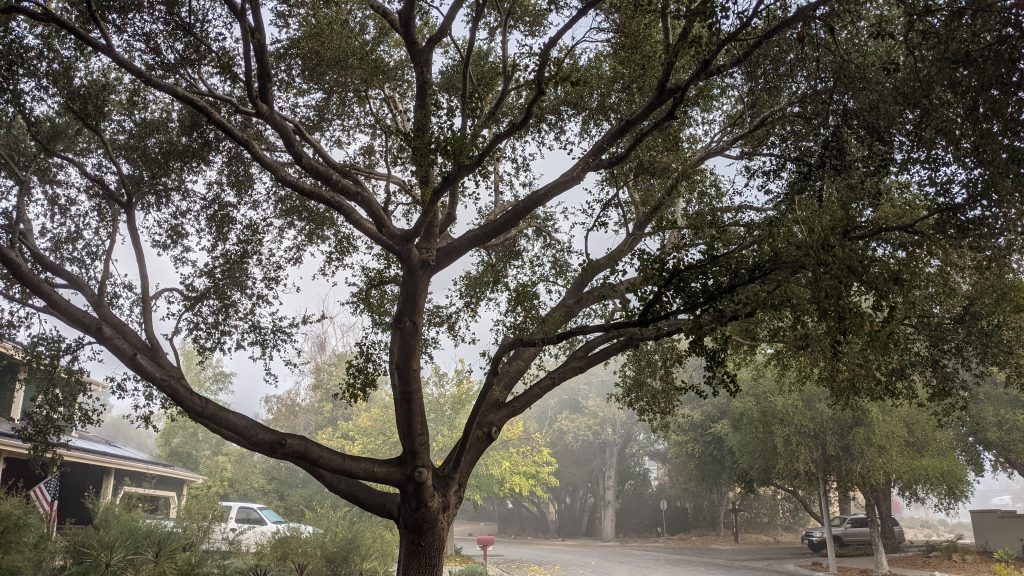
If the problem is multiple branches coming from one point the correction is far more difficult. Removing branches from a cluster again provides decay entry and potentially can weaken the attachments of the other branches. Large trees (especially if a branch has already failed) with multiple attachments at the same point are likely to have a failure. The only correction for some cases is tree removal. If there is no or low risk to people or property the tree can remain as such and or pole braces installed to prevent failure. Again, failure likelihood depends greatly on the species. Elms, Oaks, Acacia, Carob, etc, all are at risk of rapid failure.
What if my tree is storm or wind damaged and needs repair?
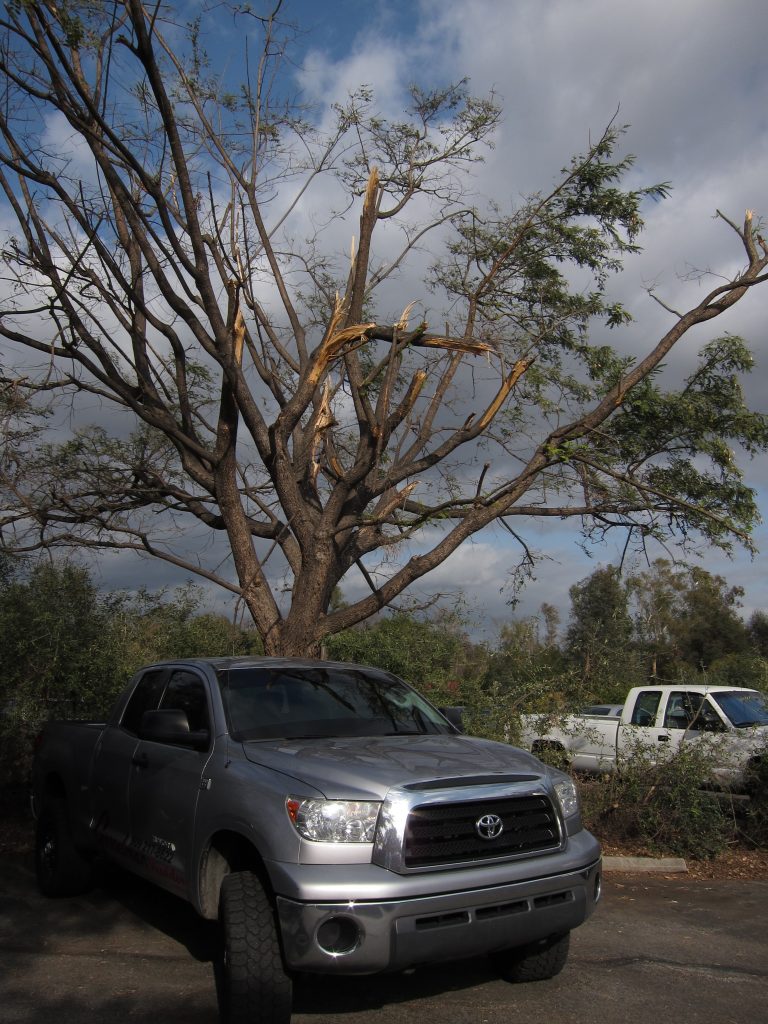
The occurrence of severe weather events is on the rise. Intense winds, increased rain, high temperatures are all commonplace now. Trees that withstood the elements in the past can now be damaged in these storms. In every case a professional opinion on the salvage of storm damaged trees is important. Expectations for restoring an acceptable crown that is safe for the site and those that use it is highly variable. A qualified consulting arborist can guide you in working with storm damaged trees or providing an opinion on removal vs restoration. It is best to contract an arborist who has no interest in a trimming/removal operation since they do not stand to gain from an easy and profitable removal job.
I realize my tree was harmed by previous tree trimming and I want to make it better
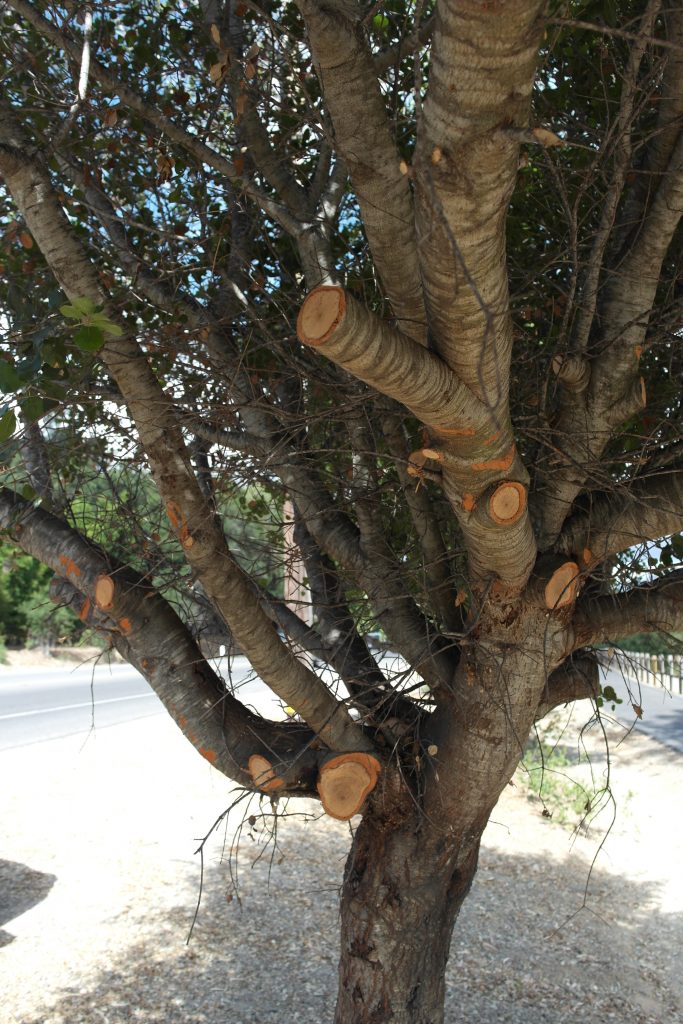
Much like the other scenarios, growth patterns and targeted branch work can fix or resolve past insults to trees from inferior pruning . However, don’t expect to resolve all the issues in a single pruning. Often it takes years of careful work to restore the canopy of an abused tree.
I just want to have my tree thinned
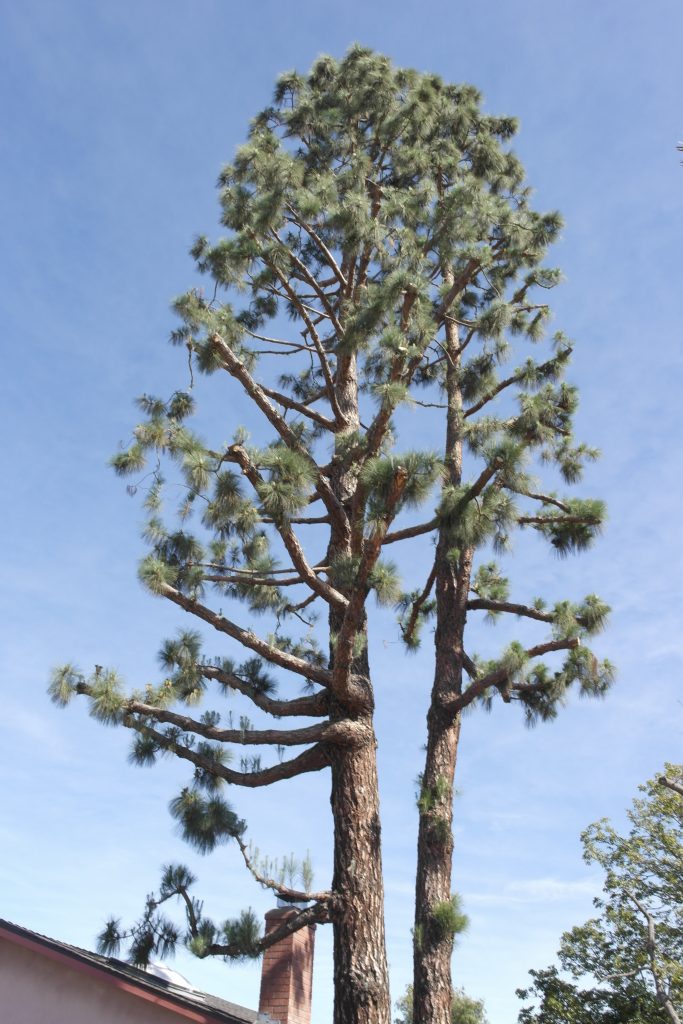
If your goal is to get more light into the garden and the tree is a variety that responds well to thinning, this is great. If you don’t have a reason then this is not a legitimate pruning need. Trees don’t need to be thinned and thinning is actually detrimental to some oak species, depriving them of the inner canopy of leaves that they rely upon. Thinning slows the overall growth of trees and reduced stored carbohydrates. Extreme thinning on a regular basis can predispose trees to some fungal pathogens.
At the end of the day….
Mid size, mid life trees require no pruning. People may have reasons to prune when the tree is too large for the site, has been damaged or needs further training to develop its architecture. Trees don’t require pruning if they grow according to their genetic program. Pruning the maturing tree really seeks to undo damage or correct issues that arise in its culture. Branch faults and tree branching structure may not be apparent to every gardener so seeking a professional opinion is always worth the money if you want to be sure of your tree’s pruning needs.
A week or two ago, 2 residents of Surrey, BC (near Vancouver) each received $3,000 fines from the City for pruning huge magnolia trees in their tiny front yards. They were the wrong trees to plant in the first place but it seems the homeowners are expected to accommodate them regardless.
https://bc.ctvnews.ca/city-of-surrey-b-c-shocks-residents-with-3-000-fine-for-over-pruning-trees-1.5639779